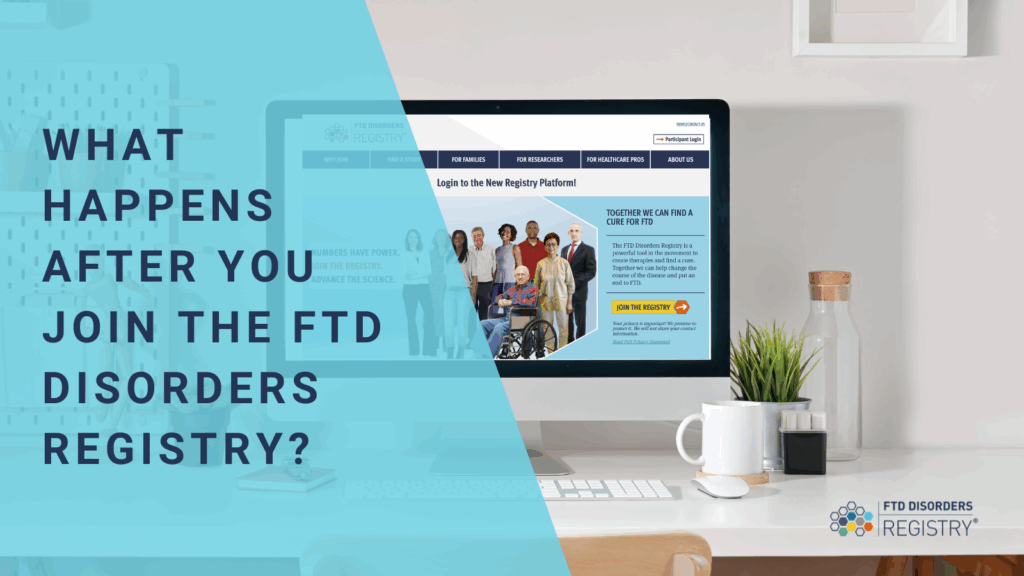PRESS & NEWS
What Happens After You Join the FTD Disorders Registry?

Learn what happens next after you make the decision to join the FTD Disorders Registry.
If you or someone you care about has been impacted by frontotemporal degeneration (FTD), you know how urgently research is needed. The FTD Disorders Registry is here to help move that research forward, and your participation makes it possible. But what actually happens after you click “Join”? Here is what to expect.
You Get Immediate Access to Helpful Tools
Once you enroll, you will get your own secure dashboard. This is your starting point for connecting with up-to-date educational resources about FTD disorders and learning about other research opportunities outside the Registry that you may qualify for.
You will also begin to receive emails with research opportunities based on the communication preferences in your profile. It is important to keep your profile current to receive communications that best match your interests.
Numbers Have Power
One of the biggest hurdles in FTD research is finding enough participants. Researchers often look at Registry enrollment numbers to decide if there is a large enough pool of people ready to take part before designing a new clinical trial. Every single person who joins makes a difference. The more people enrolled, the more likely it is that new trials can launch and move forward.
You May Be Eligible for the Registry Research Study
Some people who join the Registry can also choose to take the next step and join the Registry Research Study. If you are an adult living in the USA or Canada who is diagnosed with an FTD disorder, a biological family member, or a care partner, you may be eligible.
If you are eligible, you will be asked to sign a consent form to complete the registration process. You will then begin to receive periodic invitations to complete surveys about your lived experience, diagnostic journey, family history, and more. You can also connect U.S.-based electronic medical records and upload genetic test results.
By sharing information about your health history and experience, you help researchers learn more about FTD disorders.
You Decide What to Share
You are always in control of your information. You choose what you share, and you can update it at any time. Your information is de-identified before researchers ever see it. That means they never see your personal details. Instead, they use the combined, anonymous information to learn more about FTD disorders and to plan better studies.
You are Helping Advance Research
Your participation helps researchers find qualified volunteers more quickly, design better studies, and move us closer to better treatments and, one day, a cure.
Thank You for Joining
Every person who joins helps speed up research that could benefit families today and tomorrow. If you have not yet, consider joining the Registry. If you already have, thank you for being part of the effort to change what is possible for FTD disorders.
Together we can find a cure for ftd
The FTD Disorders Registry is a powerful tool in the movement to create therapies and find a cure. Together we can help change the course of the disease and put an end to FTD.
Your privacy is important! We promise to protect it. We will not share your contact information.



